#WomenInScience and #GirlsInScience or simply, #PeopleInSCIENCE!

The reality
Even though women have already demonstrated their abilities in science, technology, engineering, and mathematics (STEM) since humans began to examine the natural world, a significant gender gap persists with women underrepresented at all levels of STEM disciplines and improving their inclusiveness in the relevant fields has only recently become a hot topic, facing new challenges at the dawn of the era of digital transformation.
It is worth mentioning that some of the world’s major scientific Academies were founded in the seventeenth century (the Royal Society of London in 1660, the Parisian Academie Royale der in 1666, the Akademie des Wissenschaften in Berlin in 1700) but it was only in 1979 when the physicist and mathematician Yvonne Choquet-Bruhat was admitted, only 43 years from today (1).
Some historical contributions from female scientists include Rosalind Franklin that contributed to the discovery of the structure of DNA, Dorothy Hodgkin that discovered the structure of insulin, Sophia Louisa Jex-Blake that is one of the ‘Edinburgh Seven’ who fought to study medicine, Cecilia Payne-Gaposchkin that is the astronomer who discovered the composition of stars, Inge Lehmann that discovered the composition of the Earth’s core, Mary Anning that discovered the first complete fossil of a dinosaur, Barbara McClintock that won the Nobel Prize for the discovery of jumping genes, Alice Augusta Ball that is the chemist who cured leprosy, Marie Curie that was the first person to win the Nobel Prize twice (in 1903 in physics, and in 1911 in chemistry).
For all these women and all the female scientists in the globe, the calling came naturally overcoming the gender stereotypes and what the social role models imposed in the different periods. Should we think it is important to mention that they are women? Is the gender-relevant and do we have to mention it? These days, yes.
To share some numbers, among the EU Member States, the proportion of female scientists and engineers varied widely in 2019, ranging from 55% in Lithuania to 28% in Luxembourg (2). Looking at the representation of women doctoral graduates in the field of Information and Communication Technologies (ICT), this number remains as low as 22.4% (3). Examining the workforce in STEM domains, women make up only 28% (4).
The factors
The fact is that girls and women are systematically tracked away from STEM with the gap beginning in education, fuelled by gender stereotypes, and expectations around “women’s work” (5). Girls are very often brought up to consider STEM as ‘male’ topics with their abilities in these fields questioned, undermining their confidence, interest and willingness to follow STEM subjects. These stereotypes lead people to devalue the fields in which women participate, growing male-dominating cultures (6).

Source of image: She Figures 2021, Gender in Research and Innovation Statistics and Indicators, European Commission, https://ec.europa.eu/assets/rtd/shefigures2021/index.html
It has been also demonstrated through multiple studies how female role models influence girls’ preferences for STEM subjects (7). Unfortunately, girls do not have enough role models to inspire their interest in the STEM fields as they see only few examples in the books and media (8). Instead, the models promoted clearly support that women who look feminine are perceived as less likely to be scientists since they are not “looking like a scientist” (9).
The target
But the matter is not about getting the numbers up. The 2030 Agenda for Sustainable Development is fully underpinned by STEM education that provides the knowledge, skills, attitudes and behaviours required for inclusive and sustainable societies and leaving out girls and women in STEM education is a significant loss for all (10).
As indicated in the “She Figures 2021” report (11), “ensuring girls and women have equal access to STEM education and STEM careers is an imperative from the human rights, scientific, and development perspectives”, since all people should have equal opportunities and inclusion of women in STEM promotes scientific excellence and boosts the quality of outcomes. In fact, the lack of women in STEM fields is directly translated to biased Research and Innovation outputs, loss of talented and great scientists and growth opportunities.
The target is to create and grow an inclusive culture that allows and fosters a diverse range of visions questioning, exploring and building the future of science and technology, with non-gender labelled scientists offering their insights, contributions and opinions. In this better future, the word “woman” should not be the first thing mentioned in a headline, all scientists’ perspectives will matter equally, and the gender will not matter at all, but the ability, the passion, the skills and the values of people who go out of their way to make an impact.
“We’re not “women in science” – we’re scientists”
Helen Mets, Executive Vice President & CEO Materials DSM, Feb. 2019 (12)
“It does not matter what I wear and look like, whether I am a woman or a man. I want to do science because I believe in the value this can bring for better society and humanity”
Dr. Monique Calisti, CEO, Martel Innovate
The way
Towards this, education should play a central and crucial role in determining girls’ interest in STEM subjects, providing and fostering equal opportunities and society in total should acknowledge and promote by all means the contributions women have made to STEM fields in the past (13). From the policy making perspective, the European Commission adopted a new strategy for Gender Equality paving the way for several important and necessary research and innovation policy actions (gender equality and inclusiveness of the European Research Area (ERA), strengthened provisions for gender equality in Horizon Europe programme, launch of a brand new funding scheme to support women-led start-ups) (14). In complement to this, the European Platform of Women Scientists (epws.org) works towards to increase the participation of women scientists in shaping the European research agenda and policy, supporting their participation in decision making bodies at EU and national programmes and promoting the understanding and the integration of the gender dimension in science and research.
In more practical terms, Dr. Colwell stated that the value of gender equity in research needs to be calculated and communicated in a rational, fact-based way that can be understood by legislators and policymakers — in terms of the businesses that don’t get started, the discoveries that don’t get made. Women are underrepresented in the sciences everywhere but “countries benefit when they have the full participation of their citizenry (15).
Finally, we are just people trying to make a difference in this world.
Author: Dr Lamprini Kolovou, Head of Consulting Martel
 Horizon Europe
Horizon Europe



